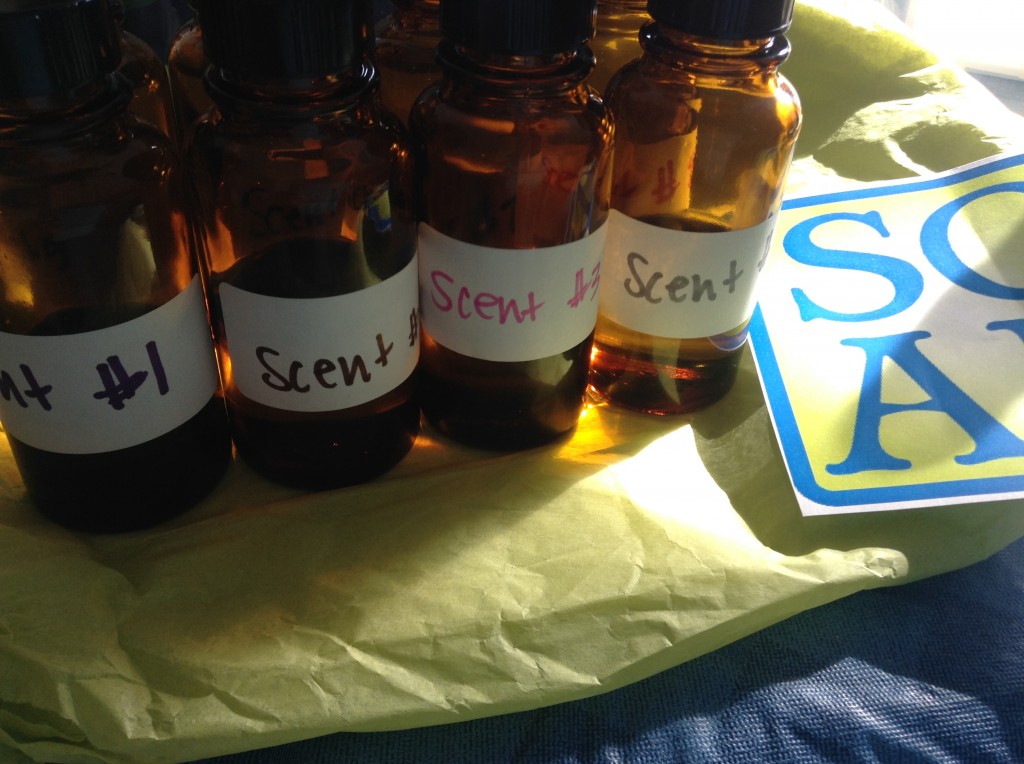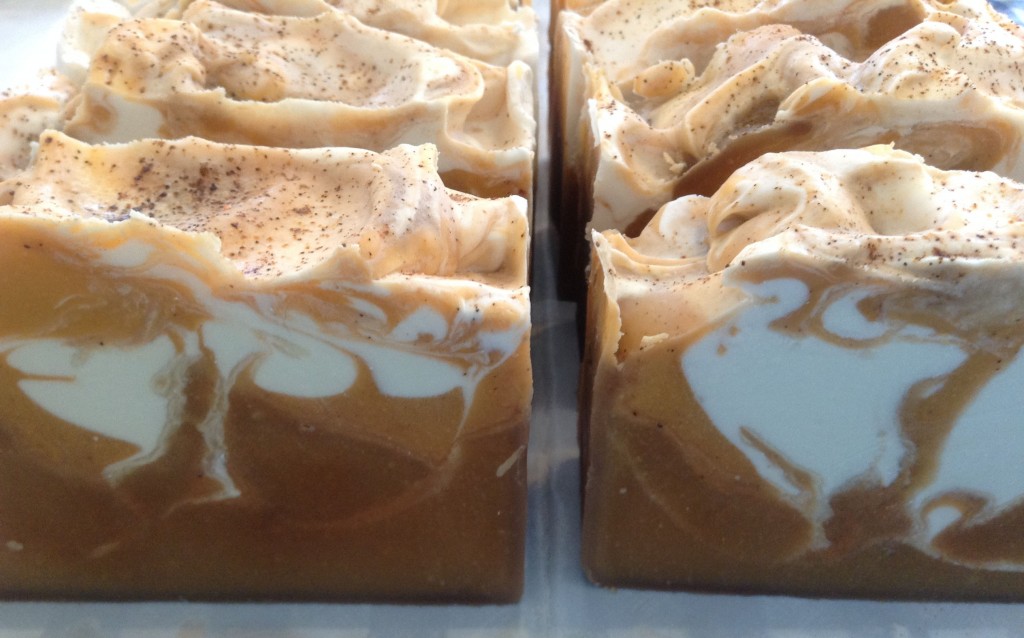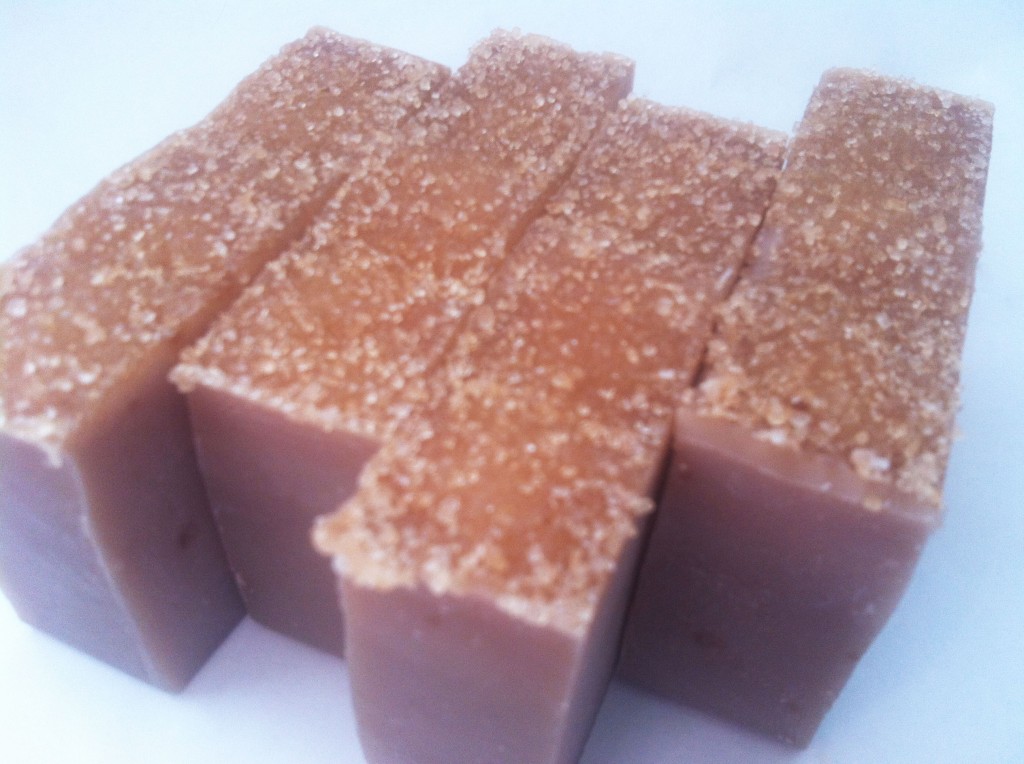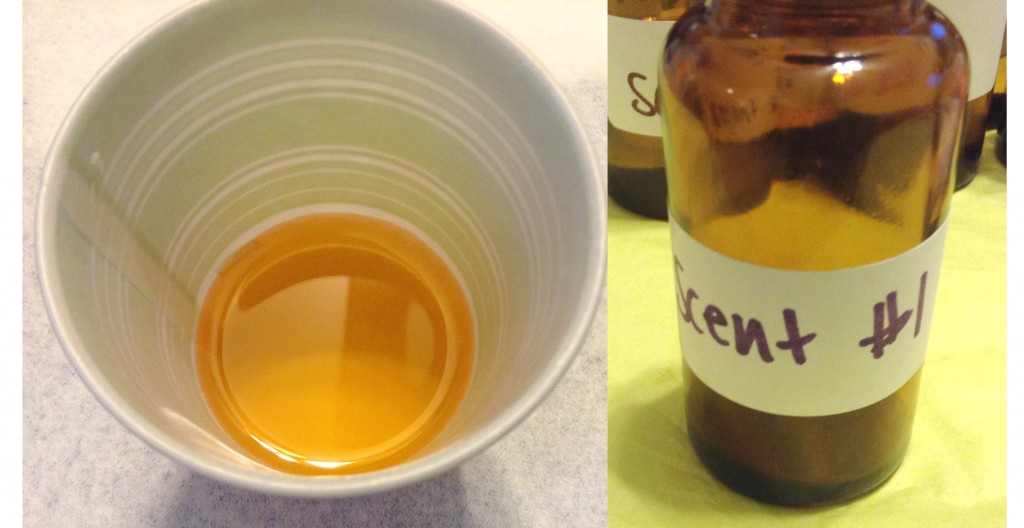 Initially, I thought I detected fruit in this fragrance, and then I smelled a sort of piney, fir-type scent with hints of floral. I wonder if this is a juniper berry scent. I tried smelling some gin to see if I detected juniper in the fragrance, but I’m just not sure. I have smelled a juniper scent used in a well-known bath and body store, and I thought it stank horribly, but this is very pleasant. So, I’m just not sure what it is.
Initially, I thought I detected fruit in this fragrance, and then I smelled a sort of piney, fir-type scent with hints of floral. I wonder if this is a juniper berry scent. I tried smelling some gin to see if I detected juniper in the fragrance, but I’m just not sure. I have smelled a juniper scent used in a well-known bath and body store, and I thought it stank horribly, but this is very pleasant. So, I’m just not sure what it is.
As you can see, it is a dark yellow out of the bottle. I had planned to use the fragrance at 6%, which would have been 25-26 grams in my recipe, but there was only 22 grams in the bottle, so the usage rate is slightly less than I planned, but not by a lot. It is still probably on the stronger end of the typical usage rate.
The recipe I used is 45% olive oil, 25% coconut oil, 25% sustainable palm oil, and 5% castor oil. I used full water (38%) and a lye discount of 6%. I combined the lye mixture and oils at approximately 100 degrees. I blended the oils and lye to a light trace. I used no additives or colorants.
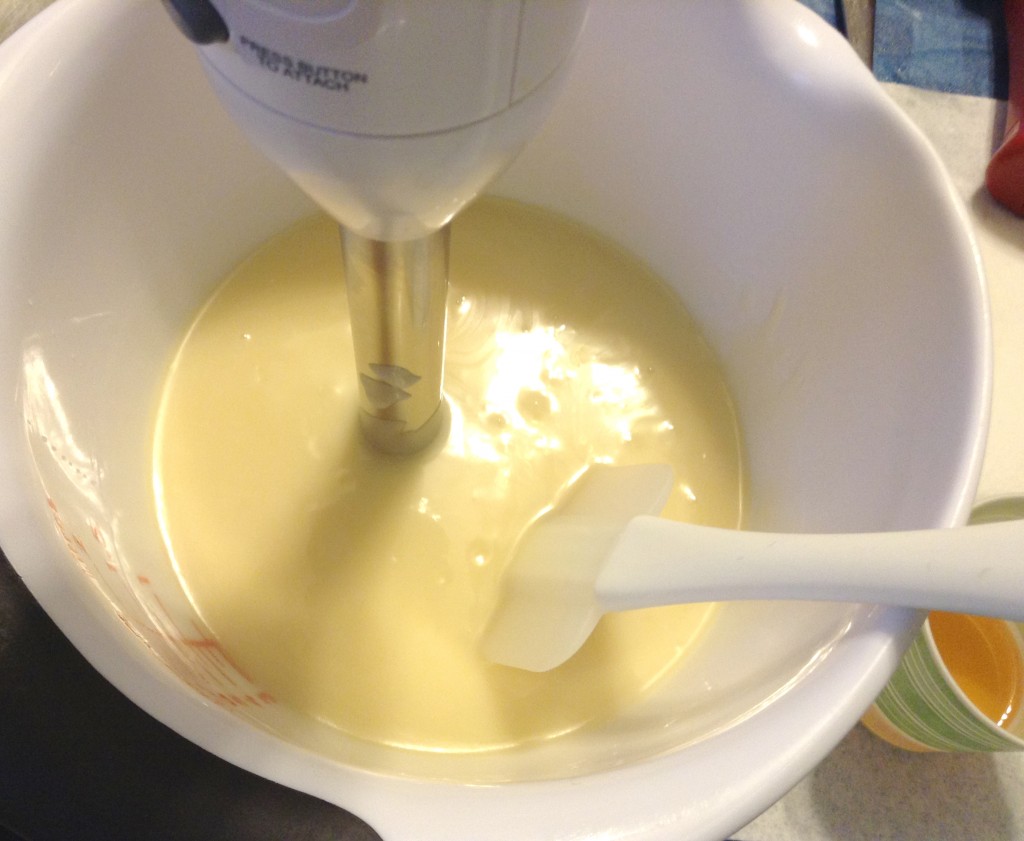 When I added the fragrance oil, it turned a buttery yellow, but initial discoloration was quite minimal, despite the dark orange tone of the fragrance. Here is a picture of the soap with the fragrance blended in.
When I added the fragrance oil, it turned a buttery yellow, but initial discoloration was quite minimal, despite the dark orange tone of the fragrance. Here is a picture of the soap with the fragrance blended in.
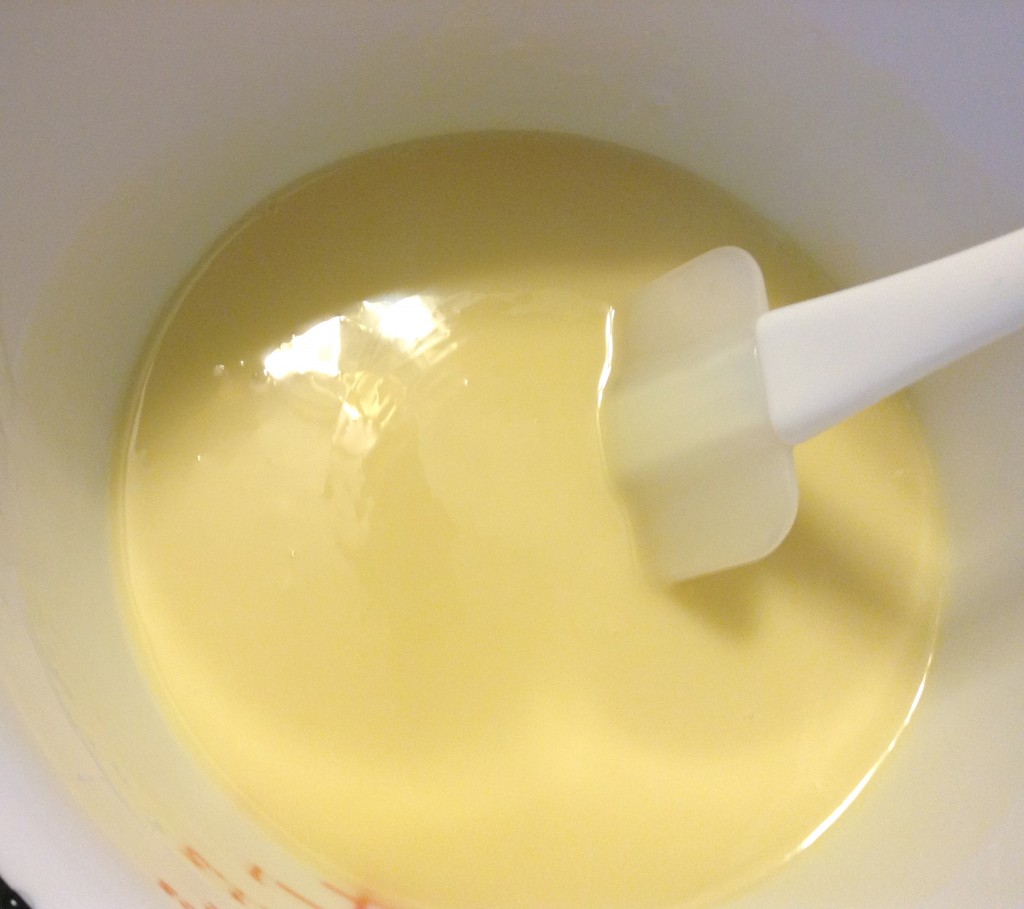 There was no acceleration or ricing at all. The fragrance behaved very well, even with additional mixing with the stick blender.
There was no acceleration or ricing at all. The fragrance behaved very well, even with additional mixing with the stick blender.
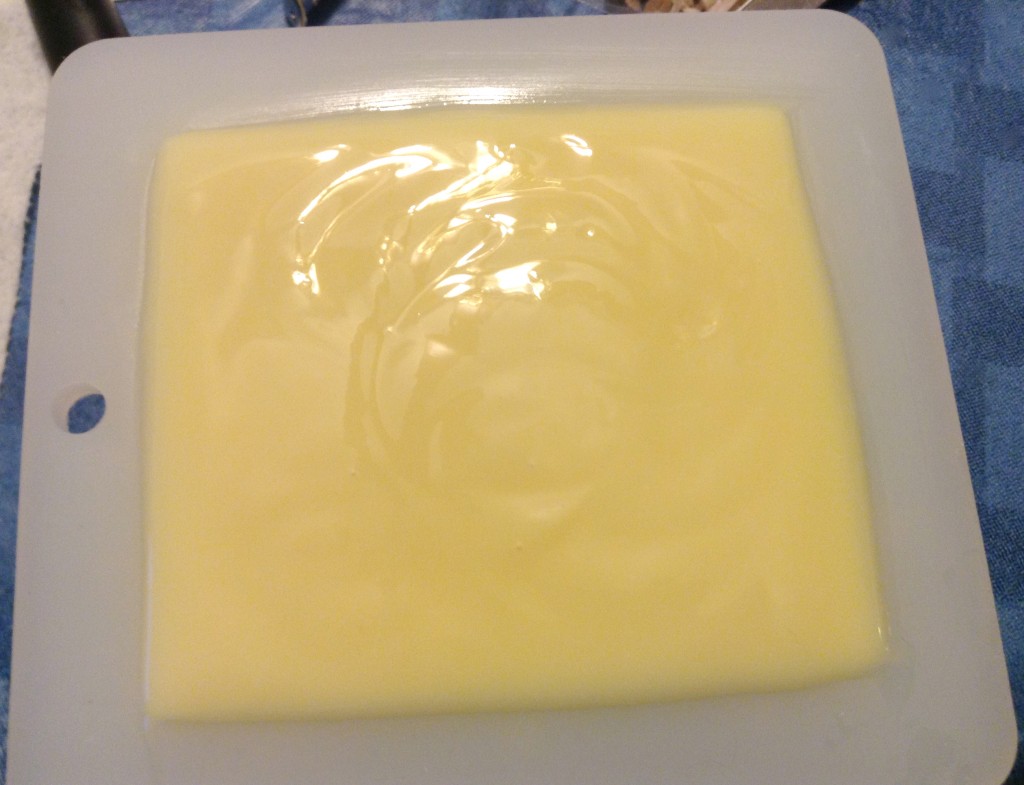 I poured the soap at a light trace. I let it set up overnight, and then I unmolded it. I have never used this mold before, so one lesson I learned is that it’s not quite ready to unmold the next day! The corners of my soap were a little torn. I don’t think the fragrance had anything to do with it. I think it’s the nature of the mold not to allow much air in, so the soap was still somewhat soft, even after gelling.
I poured the soap at a light trace. I let it set up overnight, and then I unmolded it. I have never used this mold before, so one lesson I learned is that it’s not quite ready to unmold the next day! The corners of my soap were a little torn. I don’t think the fragrance had anything to do with it. I think it’s the nature of the mold not to allow much air in, so the soap was still somewhat soft, even after gelling.
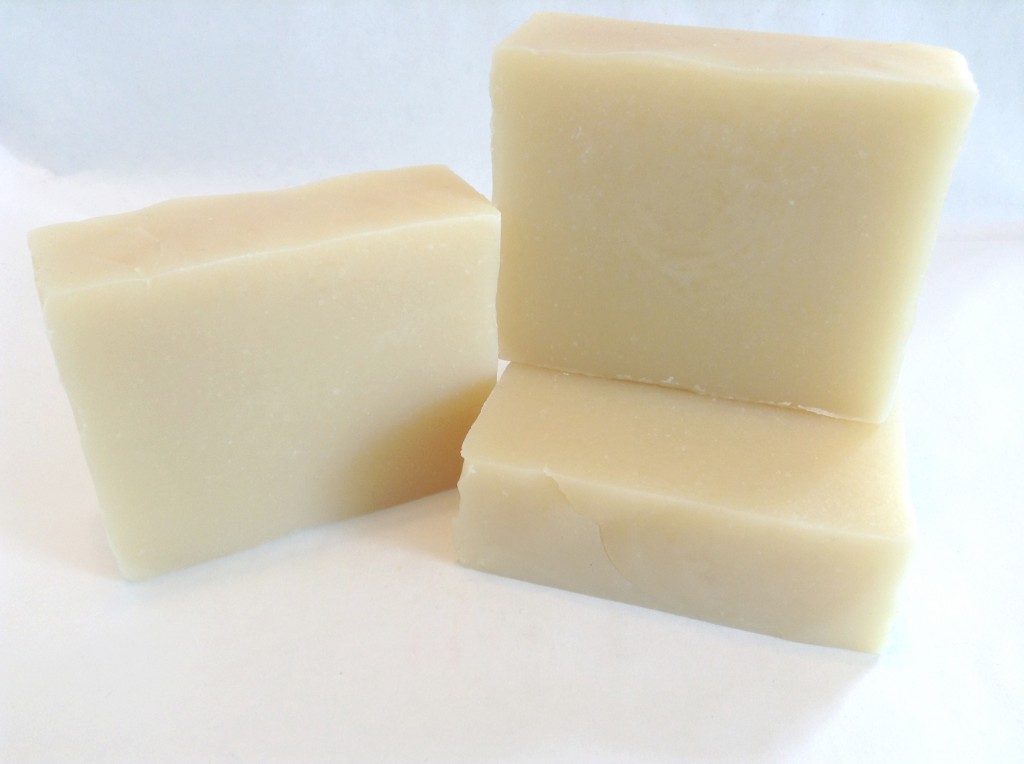 I cut the soap. As you can see, there is absolutely no discoloration. The soap is the same neutral color as when I don’t use a fragrance at all. I was sure, when I saw how dark the fragrance oil was, that it would discolor yellow. I will monitor how it changes over the course of the next week, but at least initially, this fragrance oil performs beautifully. It is very easy to work with and soaps well.
I cut the soap. As you can see, there is absolutely no discoloration. The soap is the same neutral color as when I don’t use a fragrance at all. I was sure, when I saw how dark the fragrance oil was, that it would discolor yellow. I will monitor how it changes over the course of the next week, but at least initially, this fragrance oil performs beautifully. It is very easy to work with and soaps well.
After saponification, the piney scent has retreated a little, and the fruity floral has come to the fore a bit more. There is a definite woody scent to it—almost a sort of fir needle scent. I have to admit I didn’t think I liked those kinds of scents, but I really like this scent. I think the fruity floral blends well, and it doesn’t wind up smelling like a Christmas tree. That said, I think it might make a nice holiday scent for soapers to add to their line. I envision that it would go well with a blue and green palette of colors, too. I don’t see it as a unisex scent. The floral makes it a feminine scent that women who typically like more unisex or masculine scents would probably like.
Two thumbs way up! This fragrance is great. I would definitely buy it.

